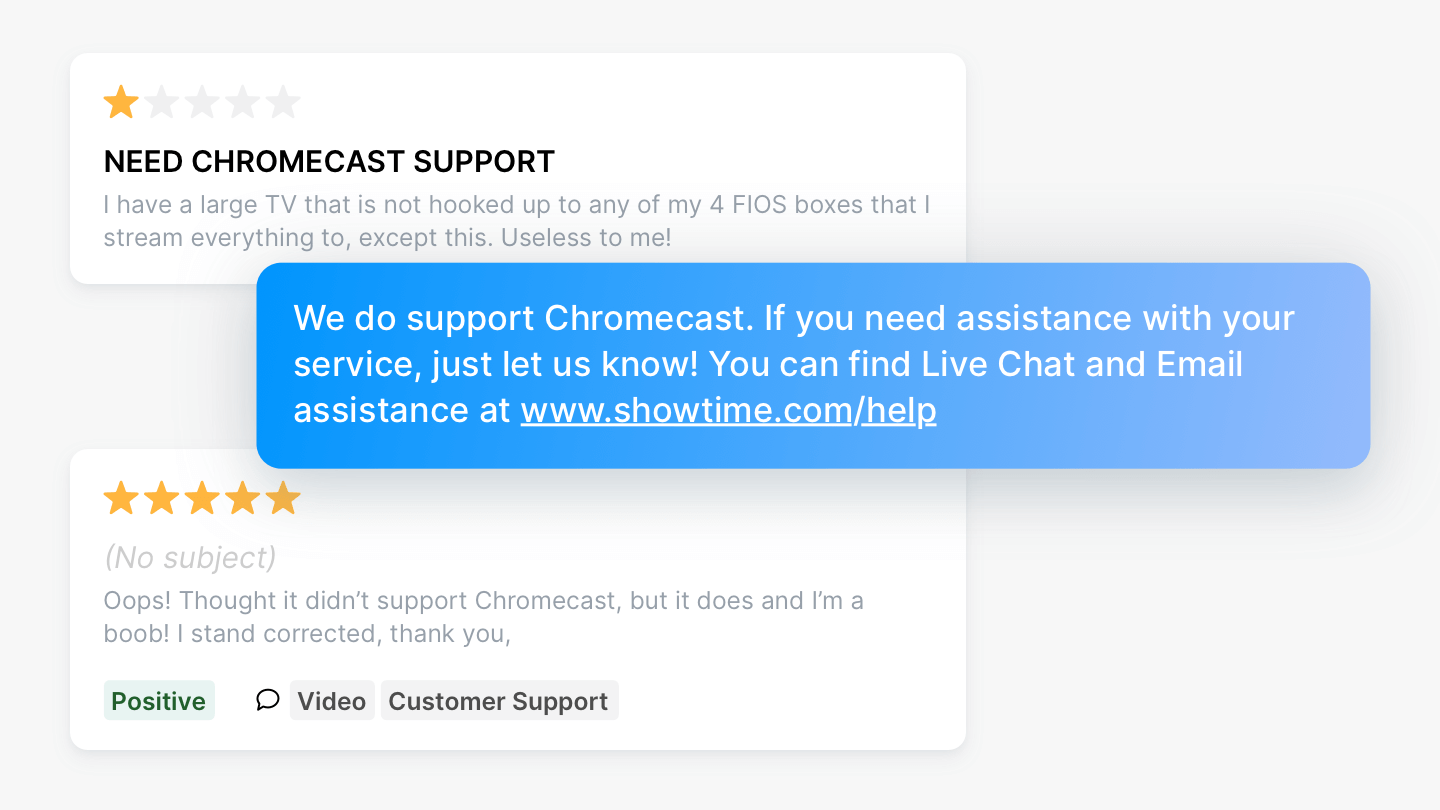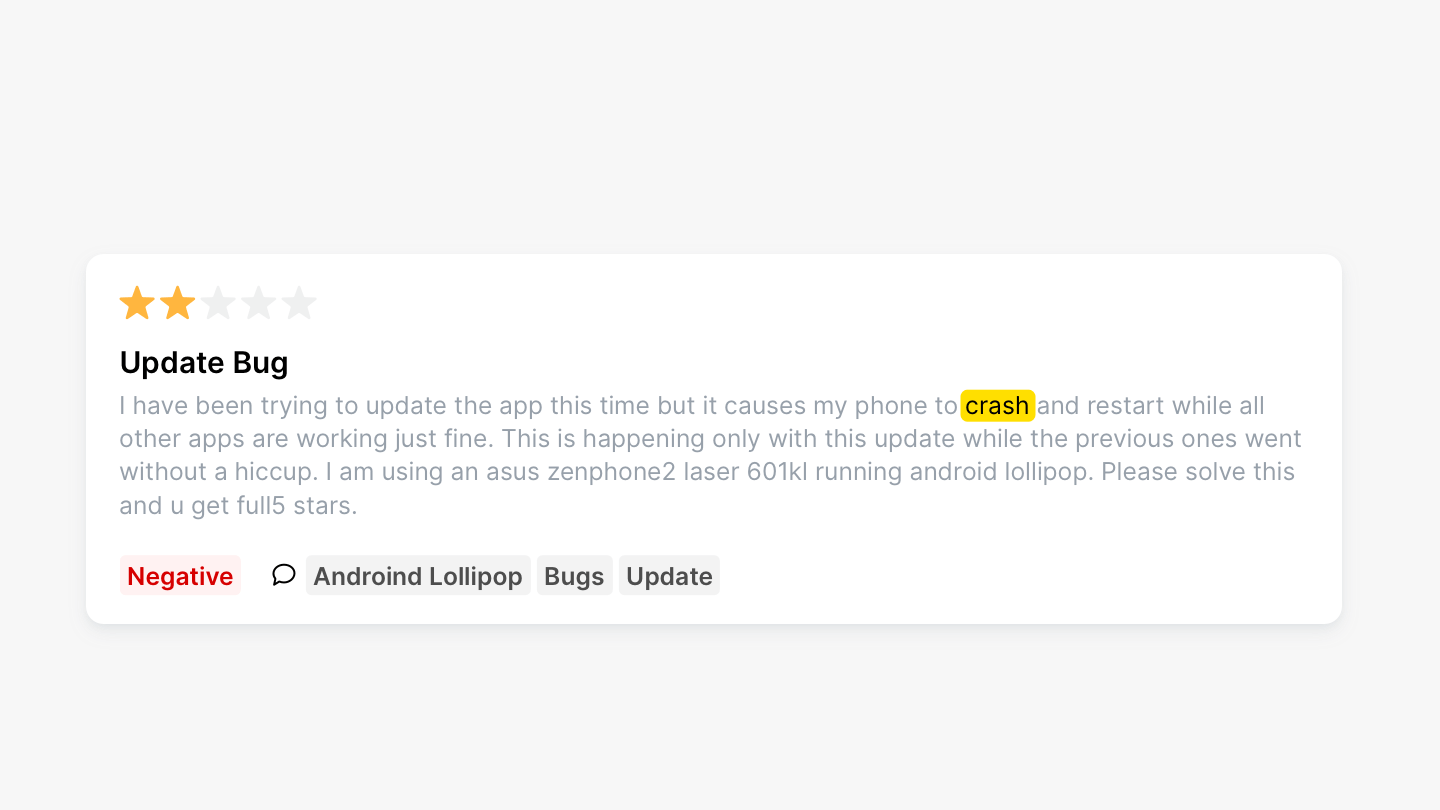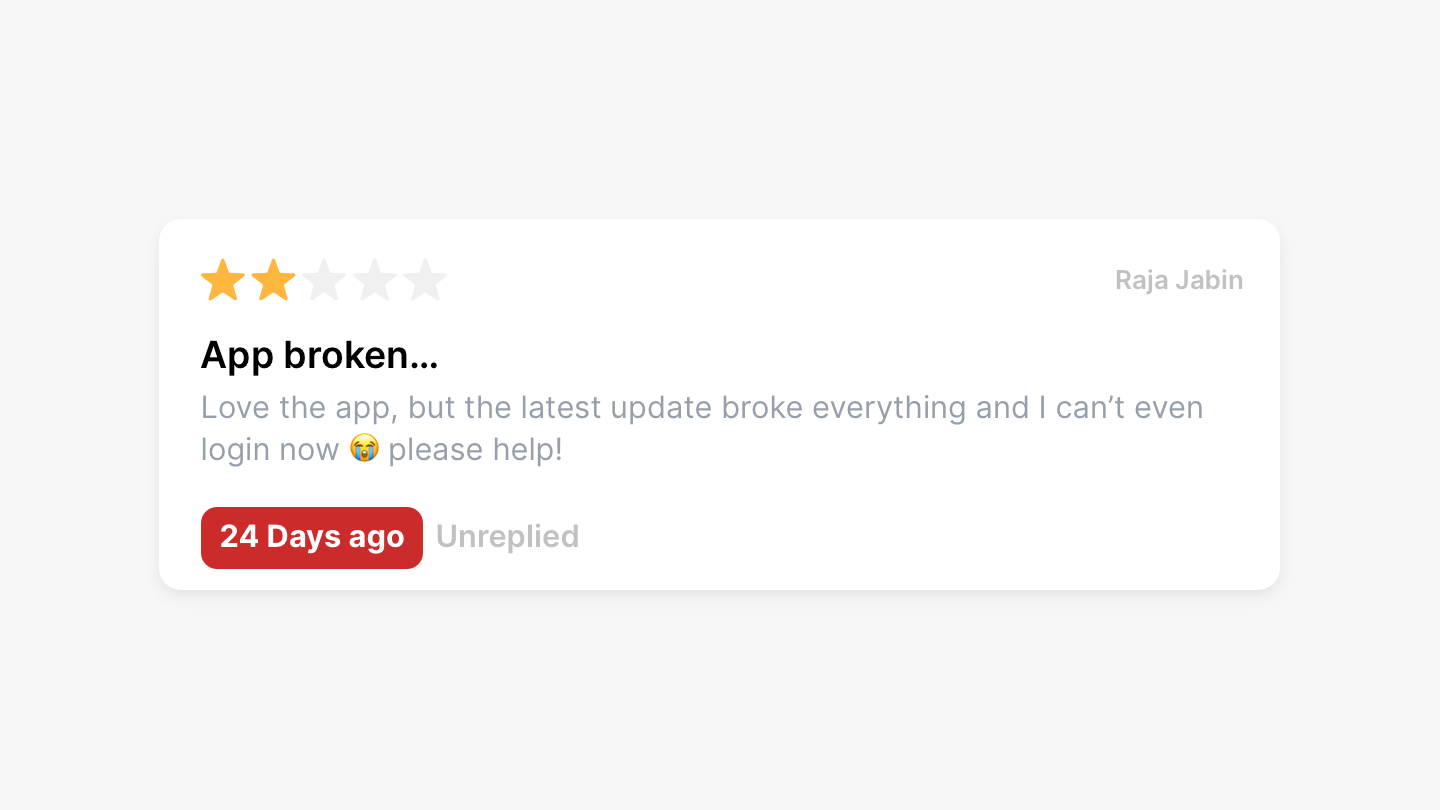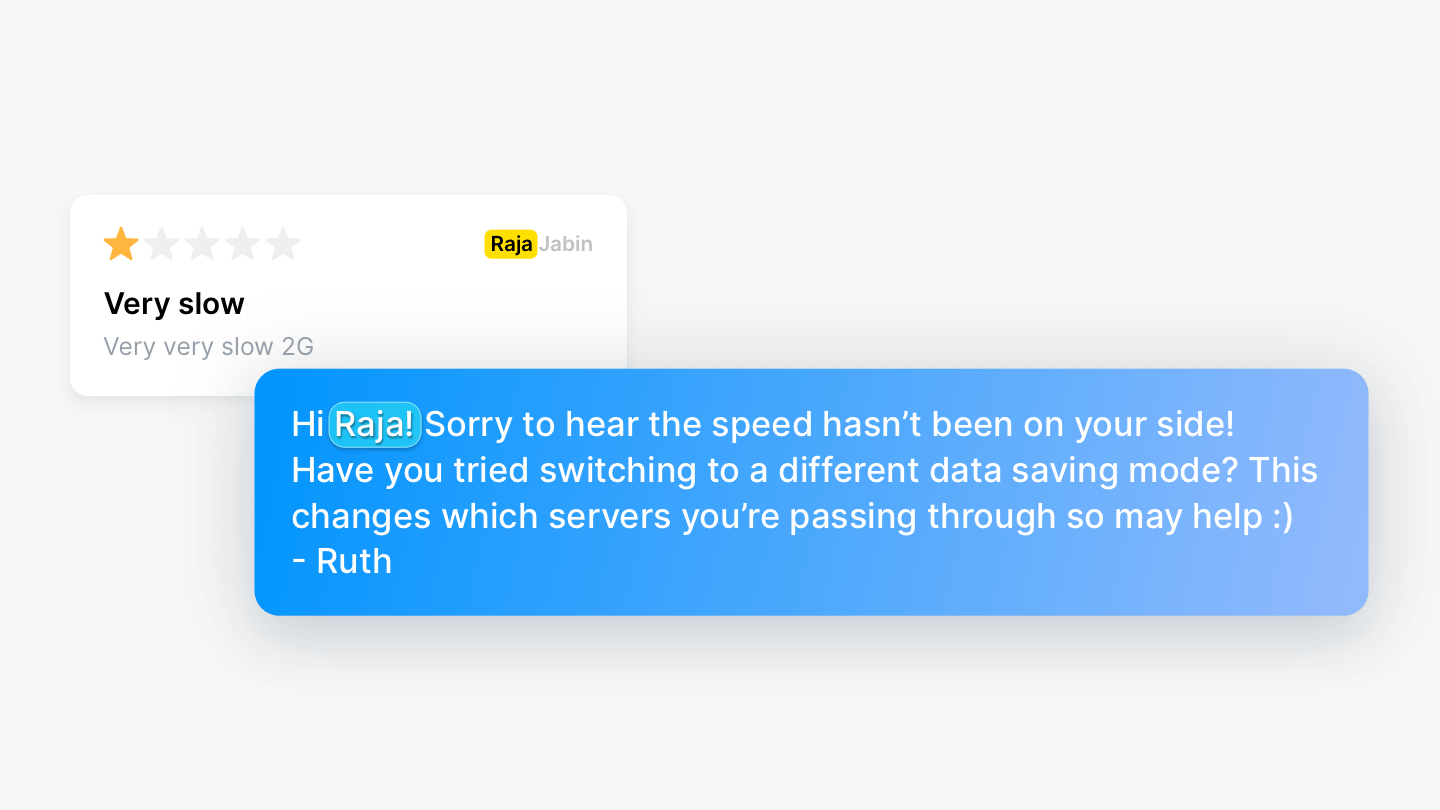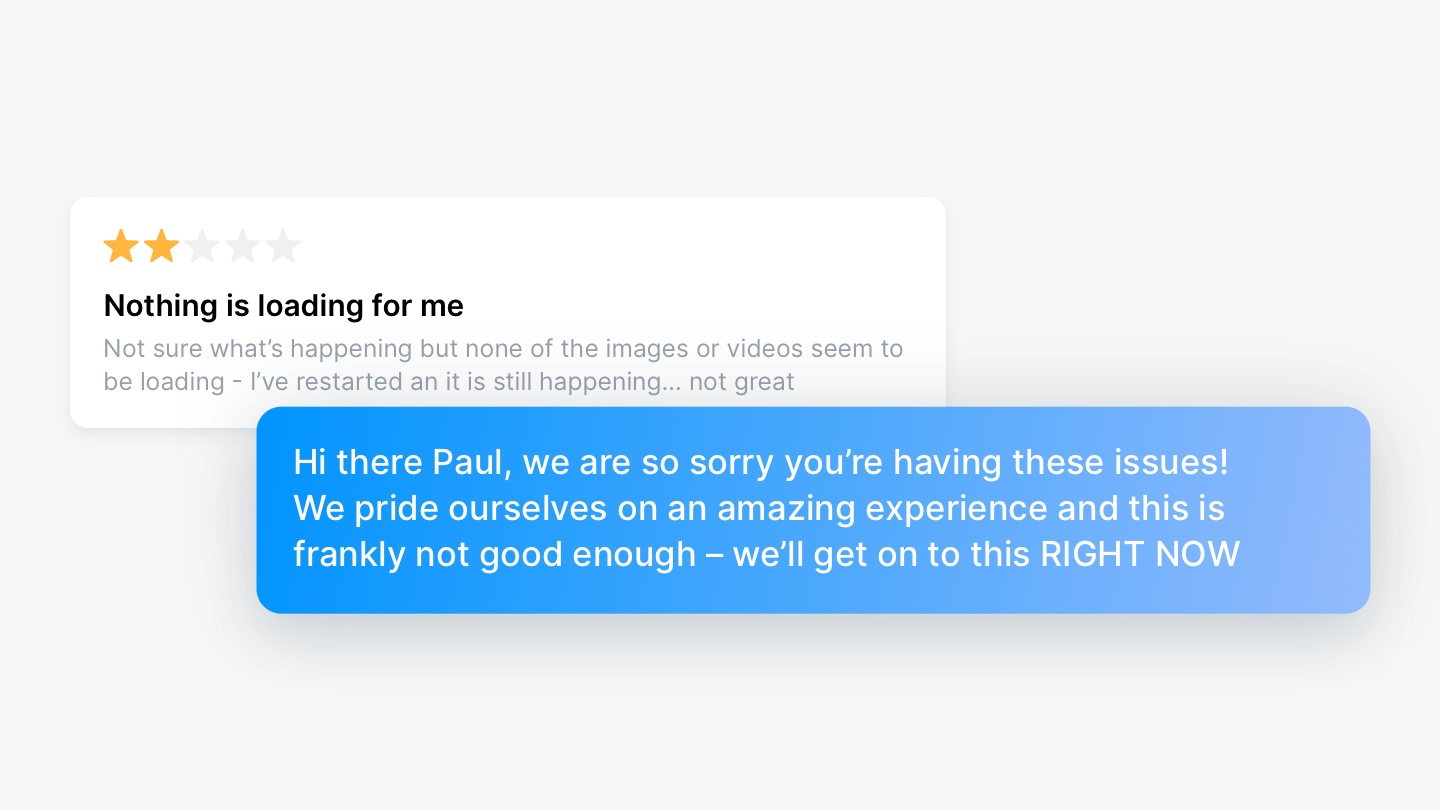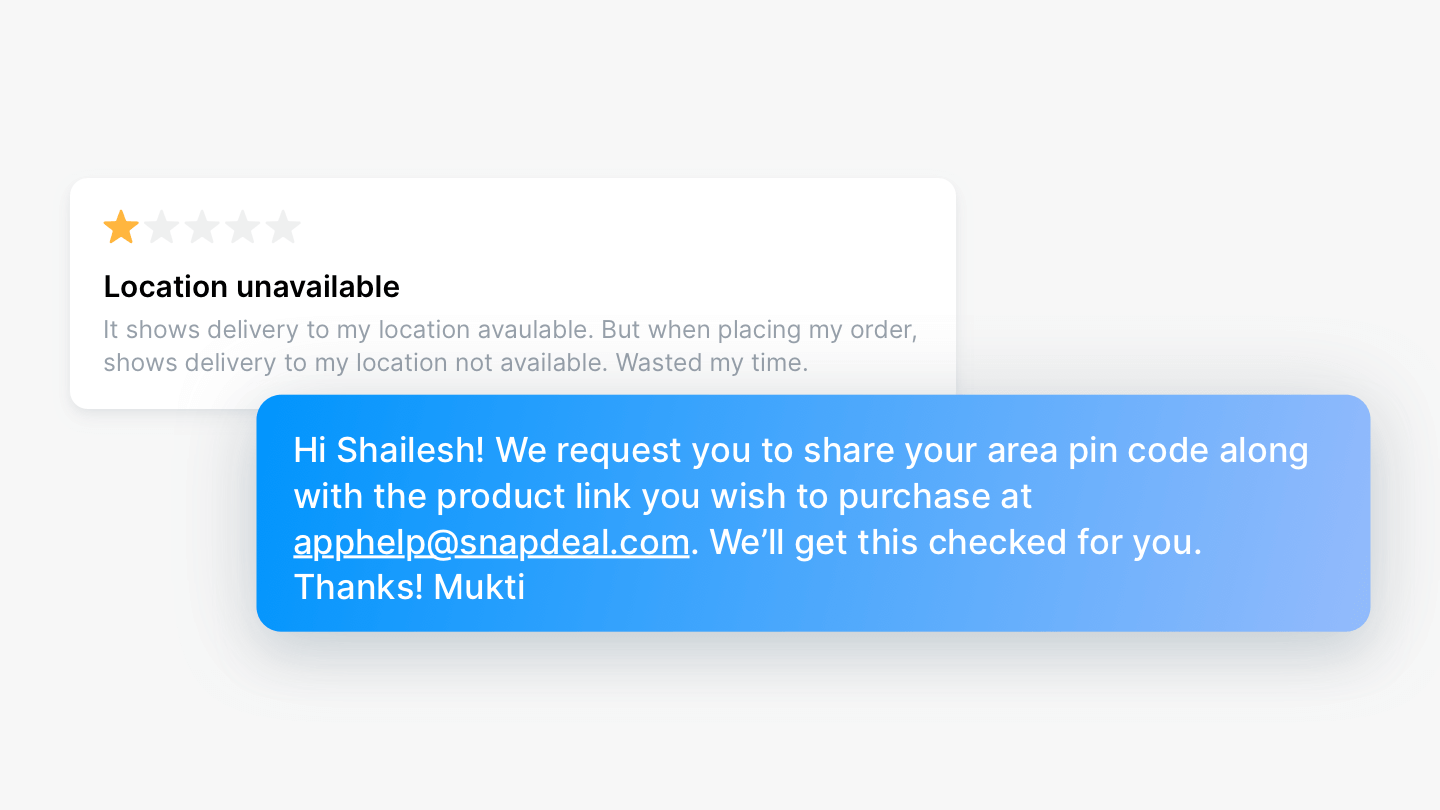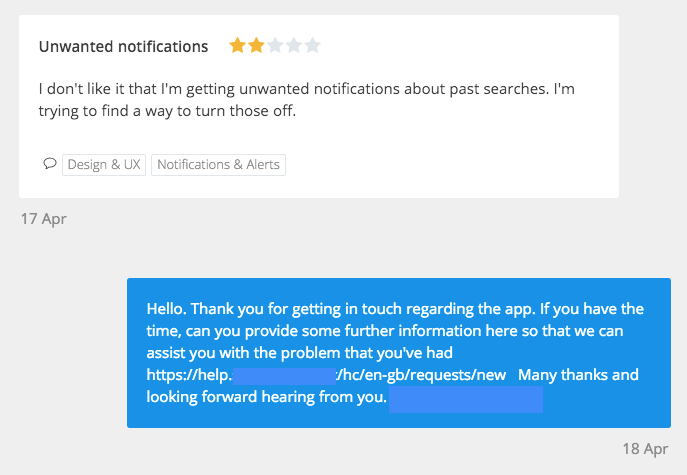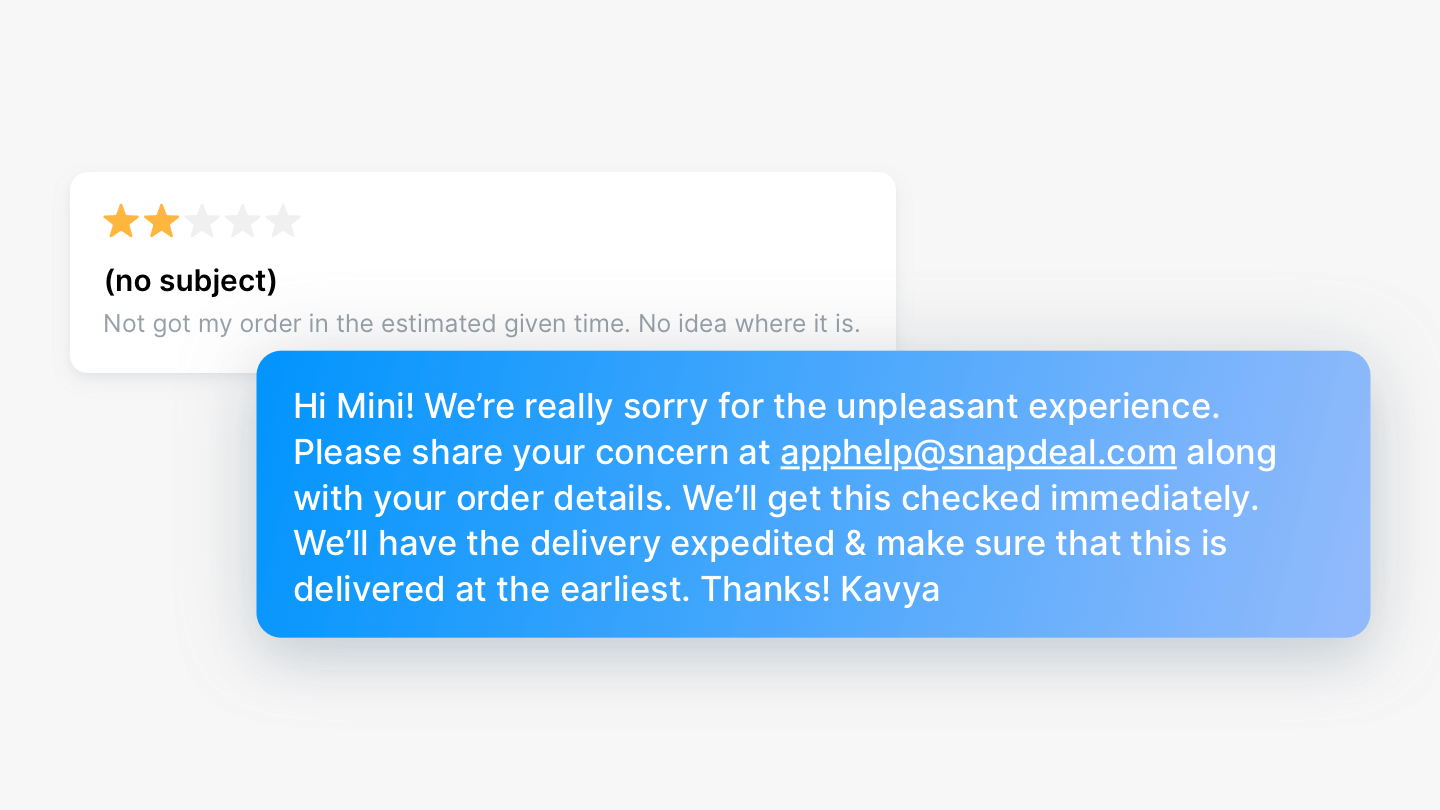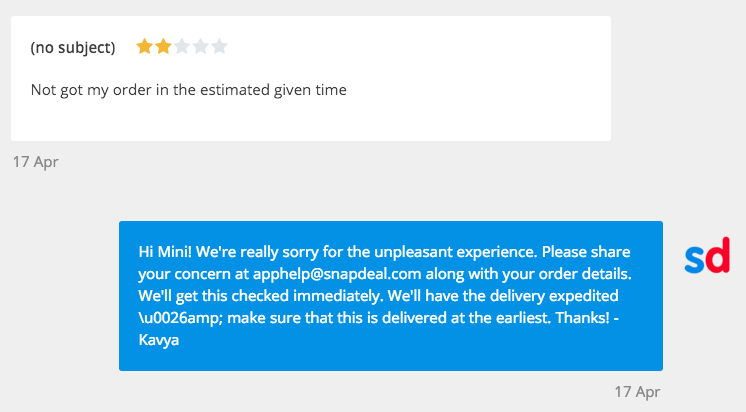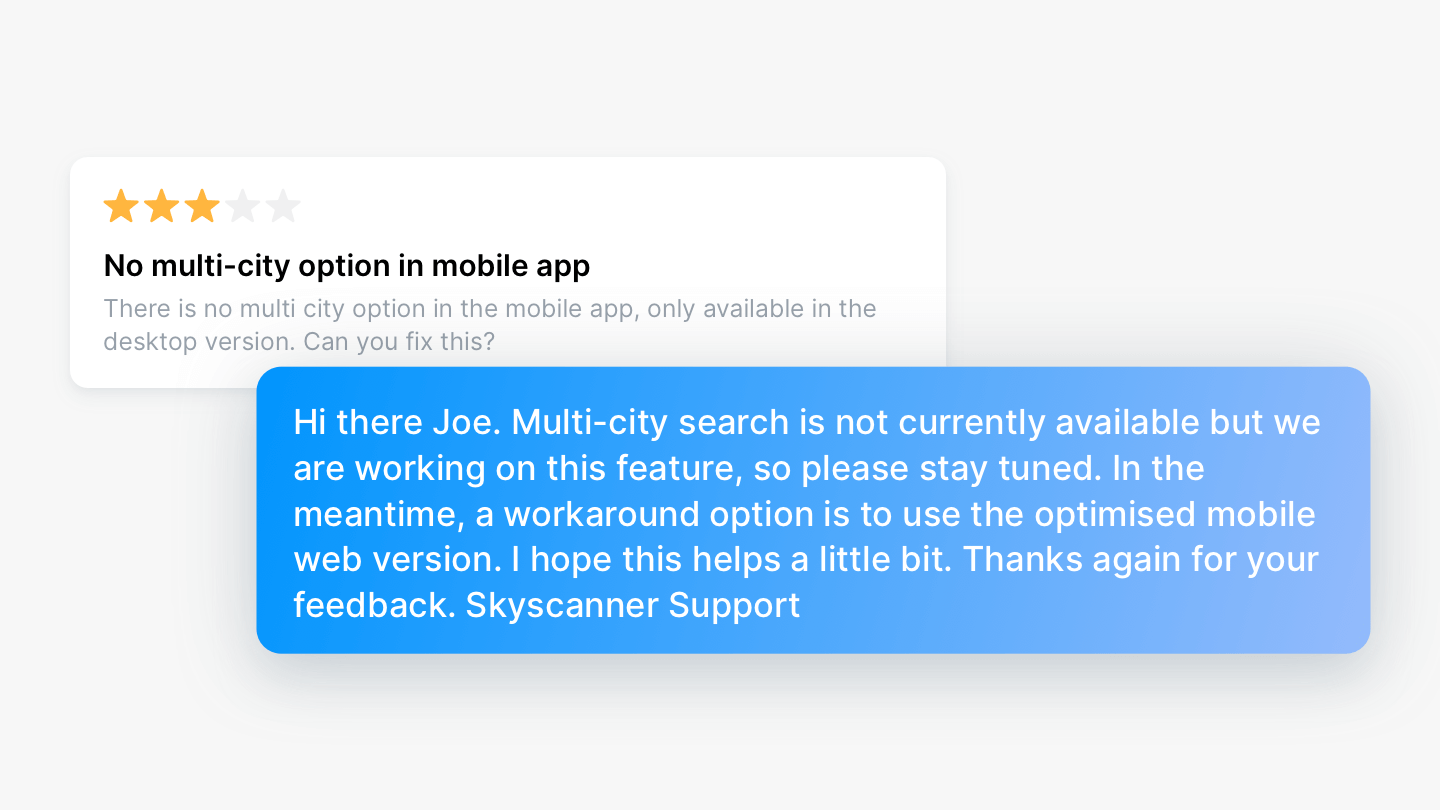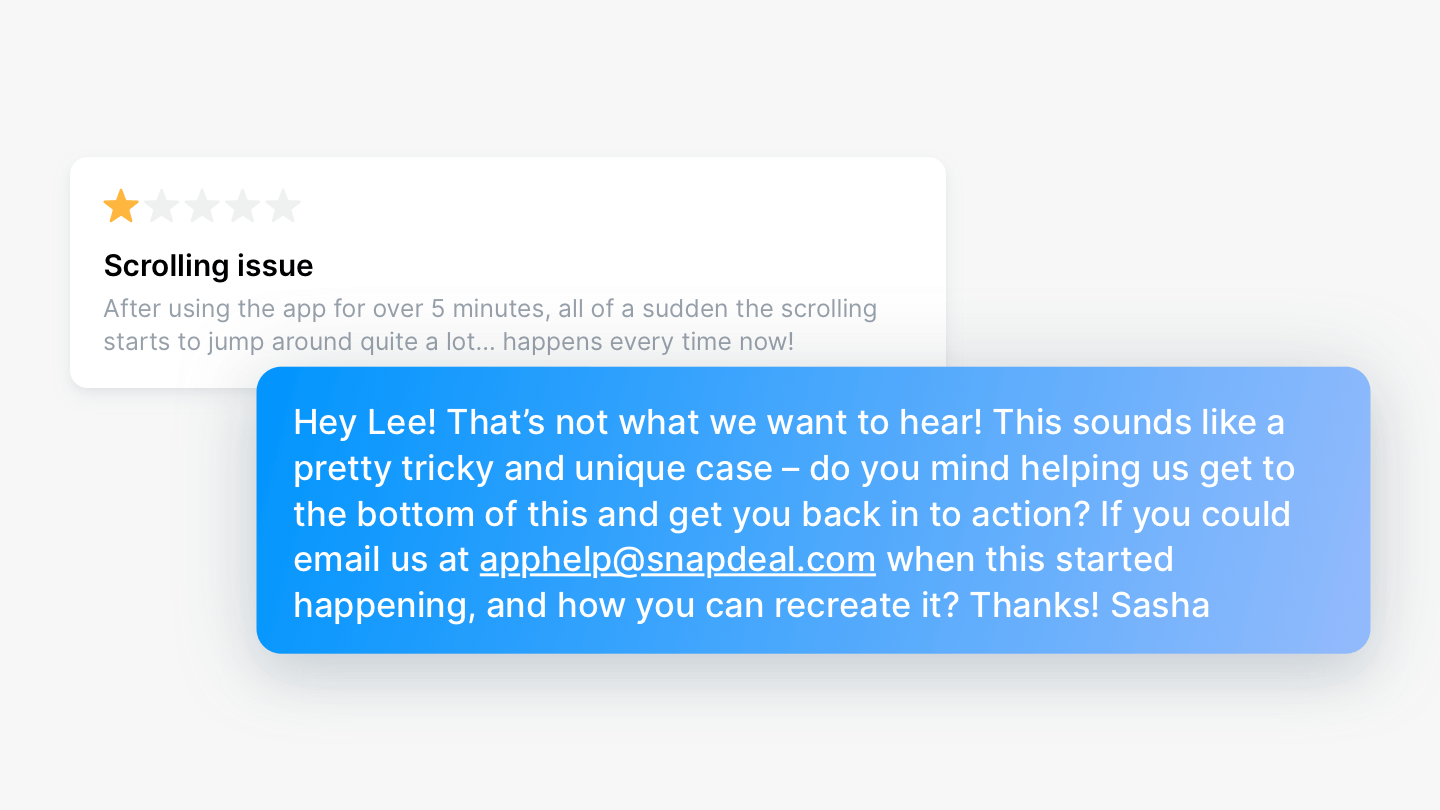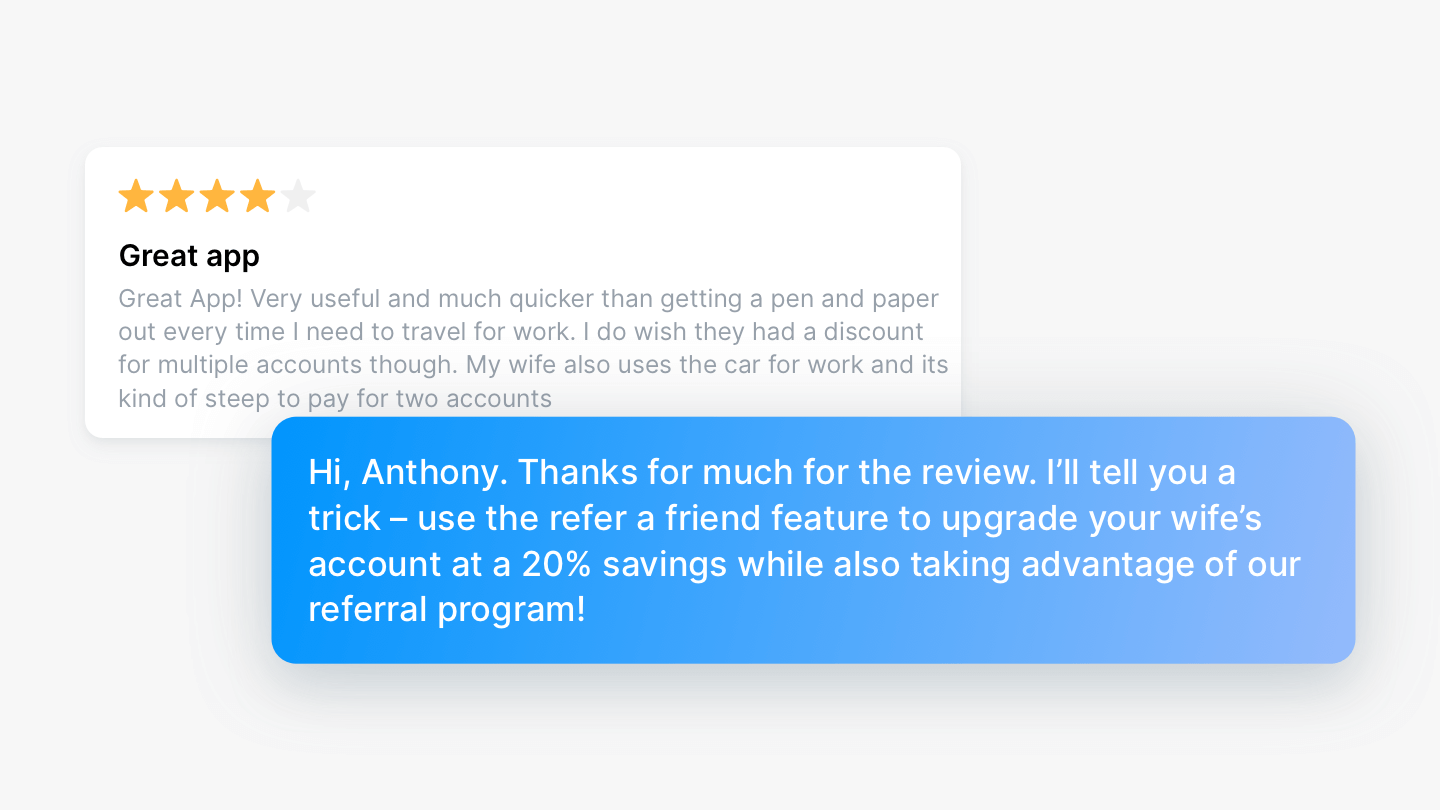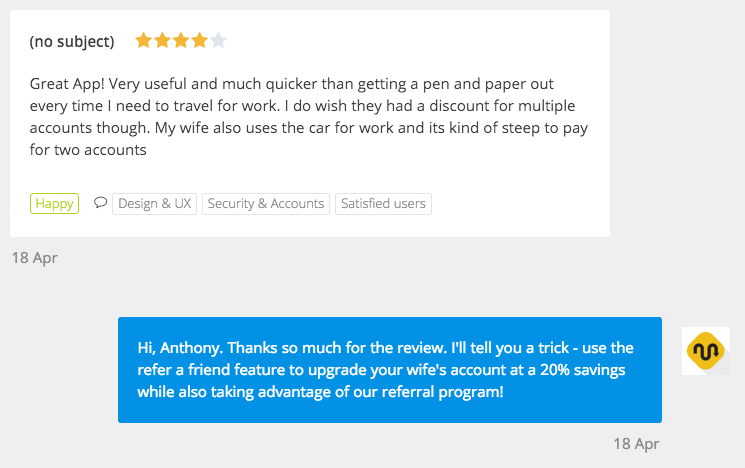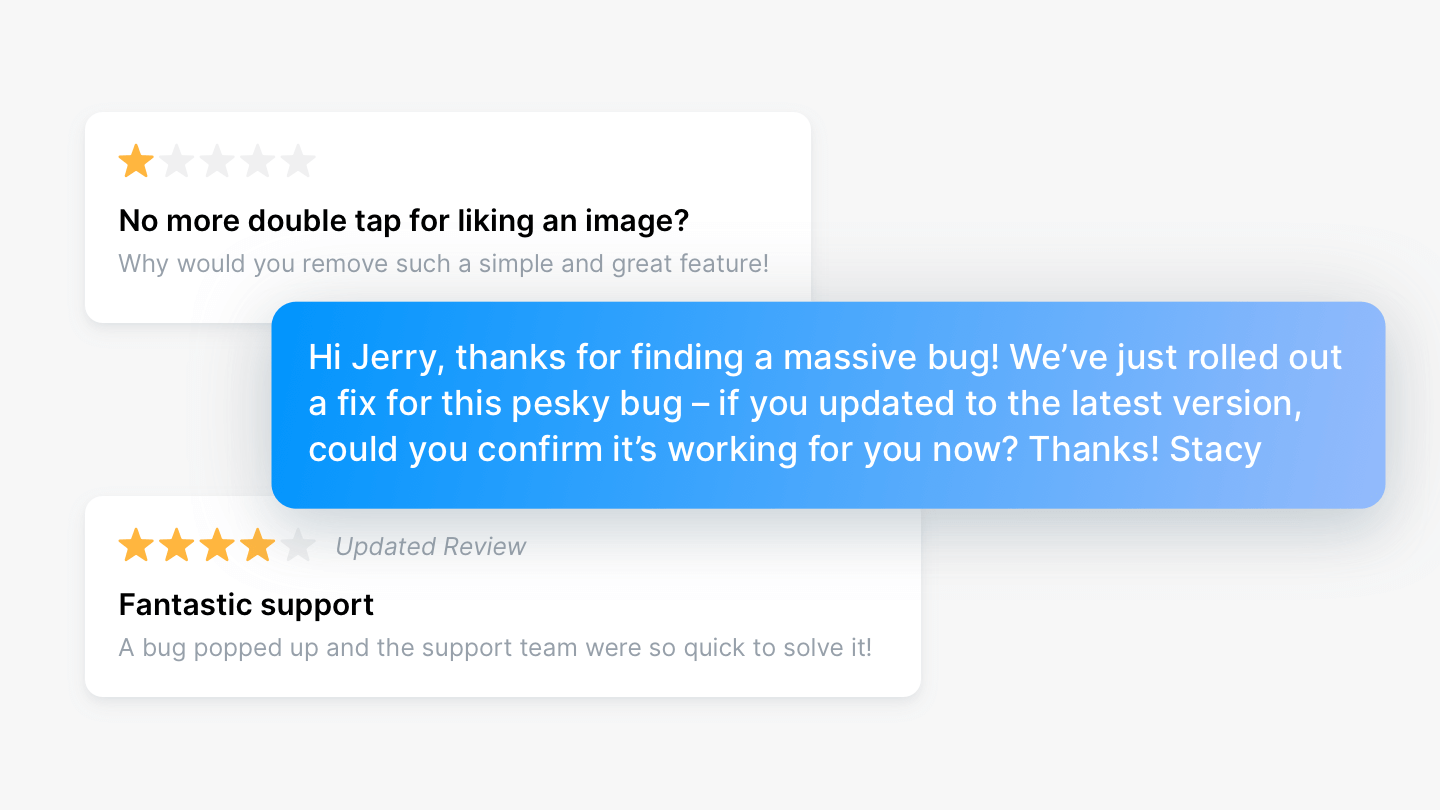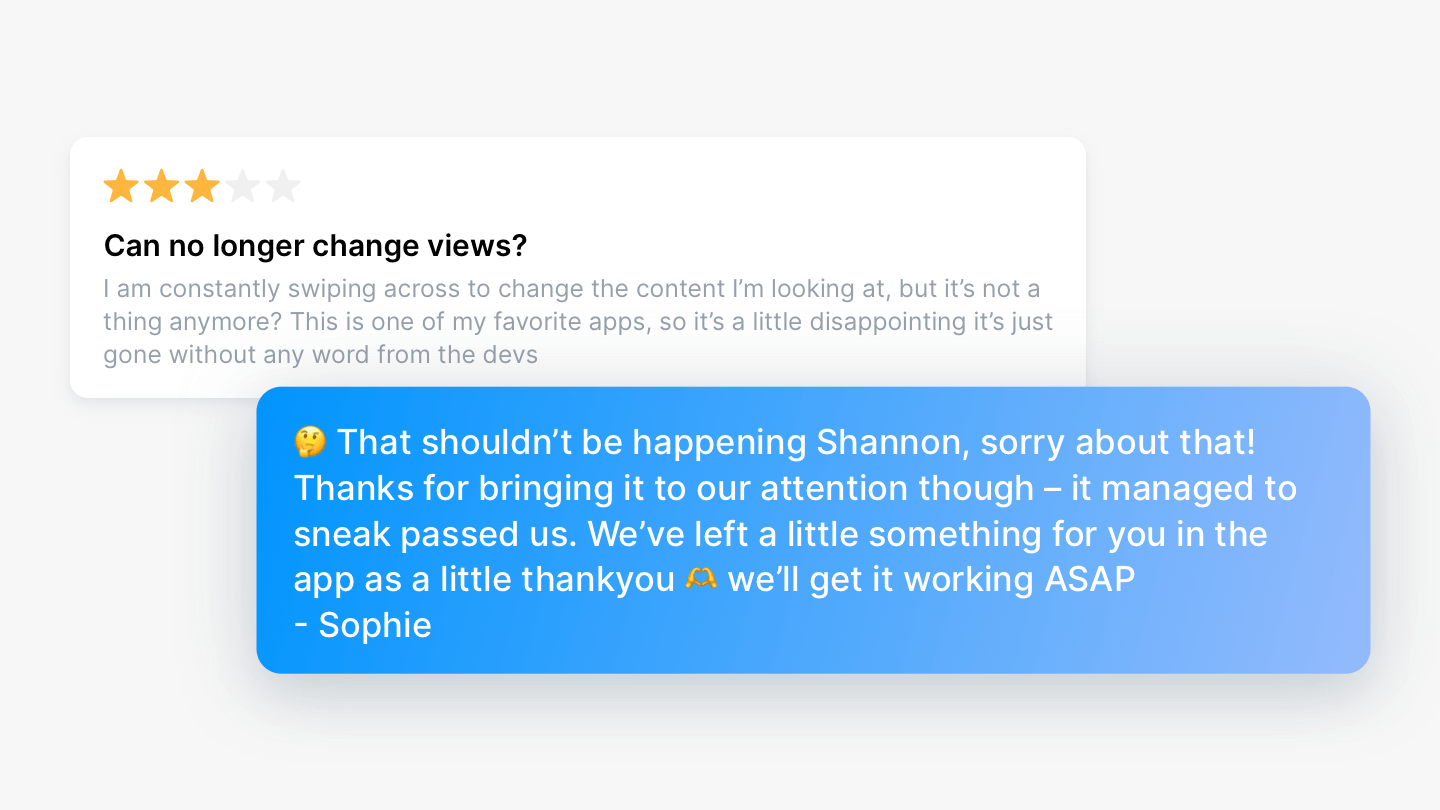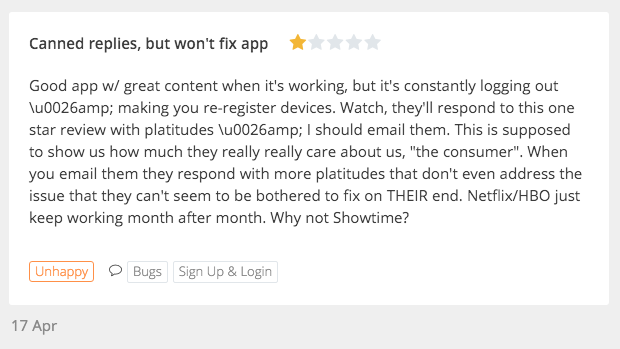Back in 2013 Google made it possible for app developers to reply to Google Play reviews. There were mixed reactions at the time, and it seems many apps still haven’t taken advantage of this new(ish) way to connect with users.
And recently, Apple has also given developers the ability to reply to app store reviewers on the Apple App Store!
We are often asked for best practices on how to reply to app store reviews, so we’ve compiled our top tips based on the hundreds of millions of reviews in the Appbot database.
If you haven’t already signed up for Appbot, hit the button below to claim your free 14-day trial!
Why you should reply to app store reviews
Before the “how”, let’s have a quick look at the “why” and the “what. There are a bunch of good reasons to reply to your iOS & Google Play app reviews.
1) Stand out from the crowd
97% of google play app reviews go unanswered. Would you download an app that ignores its users?
2) Improve your star rating
Useful replies can turn a 1-star review into a 5-star review. Here’s a great example from Showtime:
3) Work out what needs fixing faster
Crashes, errors, and other critical issues are often first reported in reviews. Being proactive can also bump your star rating – this reviewer even says they want to change their star rating if they can get a resolution of the problem!
4) Connect with real users
Find out what they love, what they hate and what you could improve, from data you already have! No waiting for survey data.
Which app store reviews should you reply to?
Is it considered best practice to send a response to every single reviewer? There are a lot of different opinions about it, but here are some rules we think are worth following as a minimum:
- 1 and 2 star reviews – think of these as an opportunity to get 5 stars.
- iOS & Google Play reviews that includes words such as bug, error, fix, freeze or crash. Acknowledging problems builds trust, especially if you then take action.
- Answer any reviews that contain a criticism, even if it’s a 4 or 5 star.
If you have the resources to send Google Play review responses to everyone and you can do it without seeming spammy or sycophantic then I’d recommend testing it for a period and monitoring the effect it has on your star ratings.
Top 10 Best Practices for Responding to Google Play & iOS Reviews
#1 Be on time.
Replying days or weeks after the iOS or Google Play review was left is not on. Would you leave a support email in your inbox for that long?
#2 Use names (theirs and yours!)
Reviewers are people too! A small thing, but it shows the user that you think they’re worth more than a canned response. Make like Opera and treat your users like real humans..
#3 Bad experiences deserve an apology
Even if you don’t think a complaint is valid, it is for the user. A brief apology makes the reviewer feel heard and acknowledged.
#4 Be specific about what other information you’d like.
Reviewers are often not sure what further information is useful to you. If you really want good quality information you’ll need to ask for it clearly like Snapdeal do:
As a user, nothing feels worse than this kind of reply:
where the link sends you to a generic support page like this:
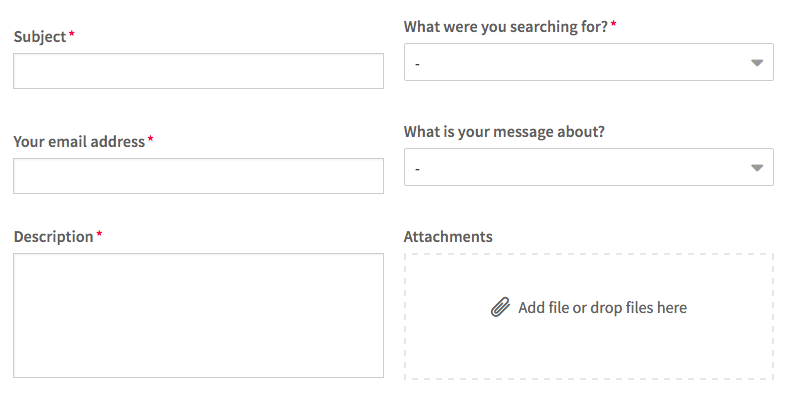
#5 Tell the user what action you’ve taken (or plan to take)
The old saying is true: actions speak louder than words. Being a good listener is a good first step but in general users really want their feedback to be actioned in some way. It’s especially true if you provide real-world goods or services outside of your app, like Snapdeal do:
#6 Point the user to useful workarounds, FAQs and help documents.
Again, keep it relevant and specific. A simple workaround or a targeted help document link might prevent the customer from going elsewhere….
#7 Take the conversation offline
By providing your email address in your reply you give the user a direct way to contact you. Taking the conversation away from the app store allows you to dig deeper and get to the root cause of their issue. Plus, it shows you actually care about helping them to a resolution.
#8 Respond to criticisms in 4 and 5 star reviews
Pay just as much attention to happy reviewers as you do to cranky ones – those nice people that gave you a good star rating deserve some love! Be like the awesome folk at MileIQ:
#9 Follow up
Built a feature lots of reviewers asked for? Fixed a bug that you originally surfaced from reviews? Go back to these users and share the good news. Of course (shameless plug warning!), it’s easier to find these reviews if you have them all nicely categorized and readily searchable in Appbot 🙂
#10 If in doubt, think how you’d feel if…
When all else fails try thinking like a user. Every one of us has been received both good and bad customer support at one time or another, so use your personal experience to guide you in the right direction.
Avoid these Rookie Mistakes
1) Overuse of canned responses
There’s nothing wrong with canned responses if they are used judiciously. Be choosy about when you use them, to avoid comments like this:
For our own apps we have found that using a combination of AI Replies, Auto Replies and Canned Replies gives us a great balance of efficiency and timeliness for our 3-5 star reviews. We still reply to our 1 and 2 star reviews by hand.
2) Referring to every reviewer to some other support channel
This falls into the same category as over-using canned replies – sending every reviewer to your support email or helpdesk tool isn’t really helpful for the user, it’s helpful for you. Put the user first and write a considered, helpful reply… please!
3) Being over-the-top with your gratitude
Stay genuine. Unless the reviewer offered to babysit your kids for the weekend or buy you a new car try not to get too carried away in your Google Play review responses.
4) Don’t argue. Ever.
Ok, so maybe you do already have the feature the angry guy that gave you a scathing 1-star review really wants. Or maybe a user has requested a feature that will never work in your app for some very justified reason. Resist the urge to argue, and send polite, helpful Google Play review responses.
We hope you’ve found these best practices for Google Play review responses helpful! Want to read more? Check out our article on managing app store reviews and ratings.
If you’ve got any other golden rules for managing Google Play review responses, we’d love to hear them via email to sales@appbot.co. Thanks for reading, and don’t forget to hit share if you found this guide helpful!
